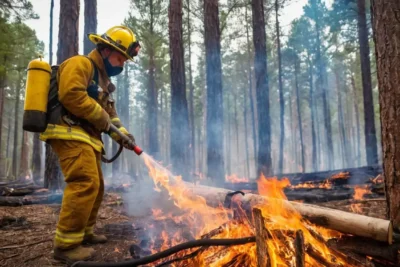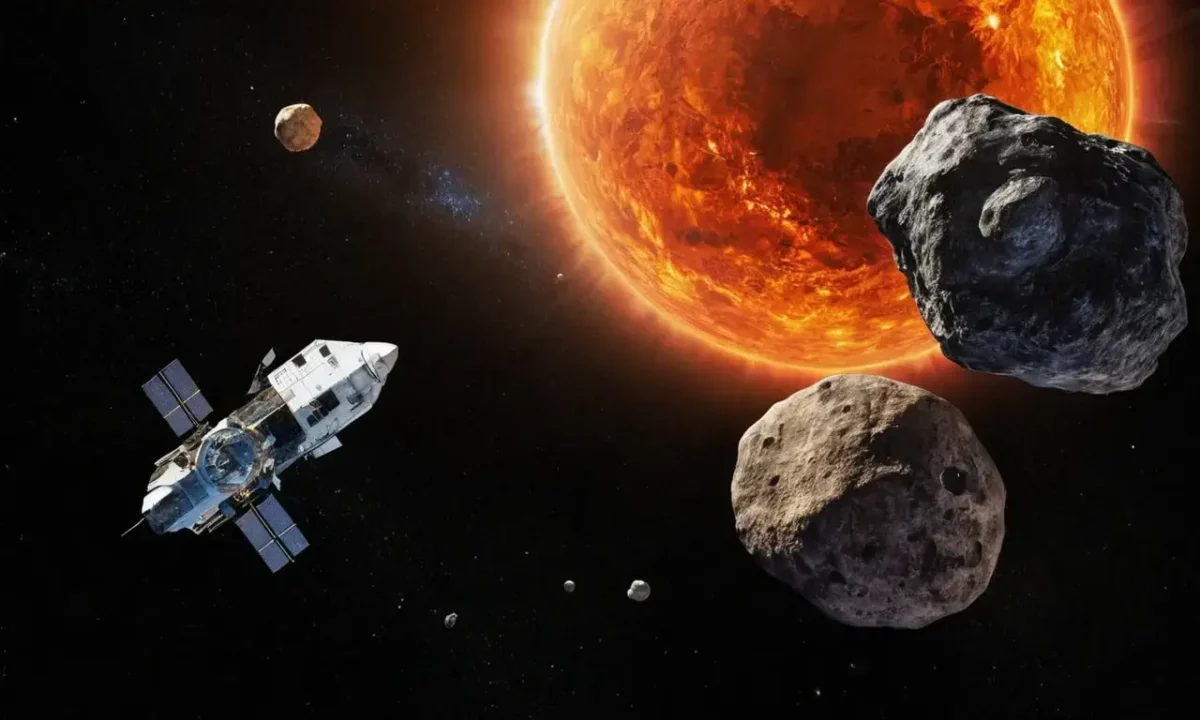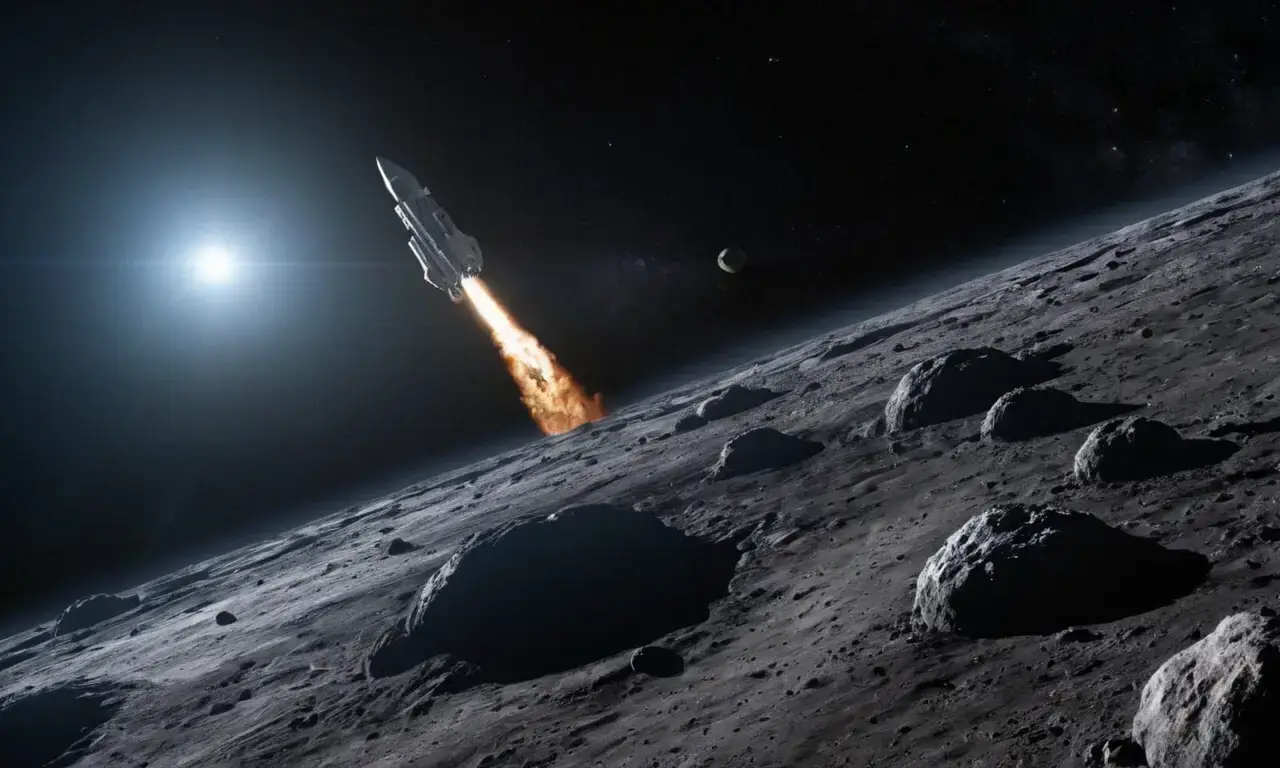
Asteroid Impact: Threat & Mitigation Efforts

Asteroids, remnants from the formation of our solar system, pose a potential threat to Earth. These rocky bodies, ranging in size from tiny dust grains to colossal objects like dwarf planets, occasionally venture close enough to raise concerns about their impact on life as we know it. While the likelihood of an asteroid hitting Earth is low, the consequences of such an event could be catastrophic. This article delves into the nature of asteroids, explores the potential damage they can inflict, and examines ongoing efforts to mitigate these risks through planetary defense strategies.
The objective of this article is to provide a comprehensive overview of asteroid impacts, covering their characteristics, detection methods, mitigation techniques, international collaborations in space safety, and future research directions. By understanding the potential dangers posed by asteroids and the measures being taken to address them, we can better appreciate the importance of continued scientific exploration and proactive planetary defense efforts.
Asteroid Characteristics & Impact Potential
Asteroids are rocky bodies that orbit the Sun, primarily found in the asteroid belt between Mars and Jupiter. These remnants from the early solar system contain a variety of materials like rock, metal, and ice. Their size varies significantly, ranging from microscopic dust grains to dwarf planets like Ceres.
The impact potential of an asteroid is directly related to its mass and velocity when it enters Earth's atmosphere. A small asteroid, comparable in size to a house, could still cause significant damage due to the kinetic energy it carries upon impact. This energy translates to a massive amount of heat and debris, potentially triggering tsunamis, wildfires, and widespread destruction.
Larger asteroids, like those comparable in size to a 20-story building or wider, possess enough energy to potentially wipe out major cities and significantly impact global life. However, the exact scale of devastation depends on several factors, including the asteroid's composition, its trajectory, and the location of impact. While smaller asteroids pose a threat, larger ones carry the potential for catastrophic consequences.
Near-Earth Asteroids: Detection & Tracking
The discovery and tracking of near-Earth asteroids (NEAs) are crucial steps in mitigating their potential impact on Earth. NEAs are those that orbit within the asteroid belt or pass close to Earth's orbit. These objects pose a significant threat due to their proximity to our planet, increasing the likelihood of an impact event.
Several organizations worldwide dedicate resources to monitoring and tracking NEAs. The most prominent is NASA's Near-Earth Object Program (NEOP), which utilizes telescopes like the Pan-STARRS observatory in Hawaii and the Catalina Sky Survey in Arizona to detect and track these objects. These programs employ various techniques, including:
* Photometry: Observing the asteroid's brightness changes as it orbits the Sun.
* Astrometry: Measuring the asteroid's position relative to other stars.
* Radar Observations: Using radar systems to map the asteroid's surface and determine its size and shape.
The data collected from these observations allows scientists to estimate the asteroid's trajectory, providing valuable information for potential mitigation strategies. By understanding an asteroid's path, we can predict its future proximity to Earth and initiate necessary measures to minimize risks.
Mitigation Efforts: Deflection & Planetary Defense
Planetary defense is a critical field of study that focuses on protecting Earth from potentially hazardous asteroids. The goal is to identify and track near-Earth objects (NEOs) and develop strategies to deflect or destroy them before they pose a threat.
One of the primary methods for mitigating asteroid impacts is deflection, which involves altering an asteroid's trajectory using kinetic energy. This technique utilizes spacecraft equipped with powerful thrusters to nudge the asteroid away from Earth. The most prominent example is NASA's Double Asteroid Redirection Test (DART), where the spacecraft intentionally collided with the asteroid Dimorphos in 2022.
The DART mission demonstrated the effectiveness of kinetic impactors for deflecting asteroids, paving the way for future planetary defense efforts. However, this method requires careful planning and execution to ensure minimal disruption to the target asteroid's orbit. Another approach involves using gravity tractors, which are spacecraft designed to capture asteroids by utilizing their gravitational pull.
While deflection is a promising strategy, it faces challenges like the cost of developing such technology and the potential for unintended consequences if an asteroid's trajectory changes unexpectedly. Therefore, planetary defense efforts must be multifaceted, incorporating both deflection and mitigation strategies.
International Cooperation in Space Safety

The threat posed by asteroids necessitates international collaboration to ensure global safety. Numerous countries and organizations worldwide are actively involved in space exploration and planetary defense initiatives.
The United Nations Office for Outer Space Affairs (UNOOSA) plays a crucial role in fostering international cooperation on space issues, including asteroid mitigation. UNOOSA facilitates communication between nations, promotes the development of international agreements, and supports research efforts related to planetary defense.
Furthermore, organizations like ESA (European Space Agency) and JAXA (Japan Aerospace Exploration Agency) are actively involved in developing technologies for asteroid detection and deflection. These collaborations allow countries to pool their resources and expertise, accelerating progress in this critical field.
International cooperation is essential for addressing the global challenge of asteroid impacts. By working together, nations can enhance our understanding of these celestial bodies and develop effective strategies to protect Earth from potential threats.
Future Challenges and Research Directions
Despite significant advancements in planetary defense, several challenges remain in mitigating the risks posed by asteroids. One key area is developing more efficient and cost-effective deflection technologies.
Research efforts are focused on improving existing methods like kinetic impactors and exploring alternative approaches such as gravity tractors. Additionally, scientists are investigating new materials for spacecraft construction to enhance their resilience against asteroid impacts.
Another challenge lies in predicting the trajectory of asteroids with greater accuracy. Advanced modeling techniques are being developed to improve our understanding of these objects' movement patterns. This knowledge will allow us to implement more effective mitigation strategies and minimize potential risks.
Finally, long-term planning for planetary defense requires addressing ethical considerations surrounding asteroid deflection. As we develop technologies capable of altering the trajectory of asteroids, it is crucial to consider the potential impact on other celestial bodies and ensure responsible use of these capabilities.
Conclusion
Asteroids pose a significant threat to Earth's survival due to their potential to cause catastrophic damage upon impact. While the likelihood of an asteroid hitting Earth remains low, the consequences of such an event could be devastating.
Fortunately, scientists and organizations worldwide are actively working on mitigating this risk through various approaches, including asteroid detection and tracking, deflection technologies like kinetic impactors, and international collaborations in space safety. These efforts represent a crucial step towards ensuring our planet's long-term survival.
As we continue to explore the cosmos and learn more about these celestial bodies, it is imperative that we prioritize planetary defense research and development. By investing in this field, we can better protect Earth from potential asteroid threats and ensure the continued existence of life on our planet.
Leave a Reply





Related Links